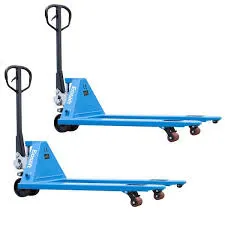


Understanding Anti-Fall Devices Innovations and Importance in Safety
In an increasingly fast-paced world, the importance of safety measures in both industrial and domestic environments cannot be overstated. One significant advancement in this domain is the development of anti-fall devices. These devices are specifically designed to prevent falls and mitigate the risks associated with them, particularly in workplaces where elevation is a factor, as well as in the healthcare sector and among the elderly population.
What Are Anti-Fall Devices?
Anti-fall devices encompass a wide range of tools and technologies aimed at preventing falls from heights. Common examples include harnesses, guardrails, safety nets, and various electronic monitoring systems. In industrial settings, such as construction and manufacturing, workers often operate at significant heights, making them vulnerable to potential falls. Anti-fall devices protect these workers by ensuring they remain securely anchored and reducing the likelihood of injury should a slip occur.
In the healthcare sector, anti-fall devices include alert systems that monitor patients who are prone to wandering or falling, such as those with dementia or other conditions
. These systems can notify caregivers or send alerts when a patient attempts to get out of bed without assistance.The Importance of Anti-Fall Devices
The statistics surrounding falls highlight the need for more effective safety measures. The World Health Organization (WHO) reports that falls are the second leading cause of accidental injury or death worldwide. In workplaces, falls account for a significant percentage of fatalities, making it crucial for employers to implement robust safety measures. Anti-fall devices not only protect workers but also contribute to overall workplace safety culture, reducing the likelihood of accidents and enhancing worker morale.

Furthermore, in the context of aging populations, falls among the elderly can lead to severe injuries, long-term health complications, and even death. Older adults often face unique challenges such as decreased mobility, balance issues, and medications that may affect their coordination. Anti-fall devices tailored for the elderly, including grab bars, non-slip mats, and advanced alert systems, are essential for promoting independence while ensuring safety in their living environments.
Innovations in Anti-Fall Technology
The market for anti-fall devices is evolving with advancements in technology. Smart wearables, equipped with sensors, can detect when a person has fallen and automatically alert emergency services or family members. These wearables use accelerometers and gyroscope technology to determine the orientation of a person and can differentiate between a fall and normal movements, reducing false alarms.
Additionally, the integration of artificial intelligence (AI) provides an unprecedented level of customization and responsiveness. AI-powered systems can learn individual behaviors, detecting when deviations occur, which may indicate a higher risk of falls. This predictive capability enables caregivers to intervene proactively, thereby enhancing safety.
In industrial environments, advancements in materials and design have led to the creation of lighter, more comfortable harnesses that do not impede workers’ mobility. Meanwhile, modular safety systems allow for tailored configurations that fit various job sites and working conditions, accommodating the diverse needs of the workforce.
Conclusion
The evolution of anti-fall devices is a testament to our commitment to enhancing safety across various sectors. By integrating cutting-edge technology and innovative designs, these devices play a crucial role in preventing falls and ensuring the welfare of individuals, particularly within vulnerable populations such as seniors and workers in high-risk jobs. As advancements continue, it is imperative for organizations and individuals alike to recognize the importance of incorporating these safety measures into everyday practice. By doing so, we not only safeguard health and well-being but also foster a culture that prioritizes prevention and care, ultimately leading to healthier, more secure environments for all.



